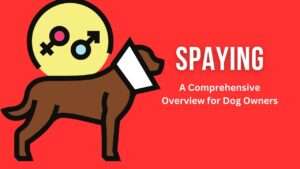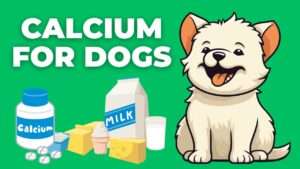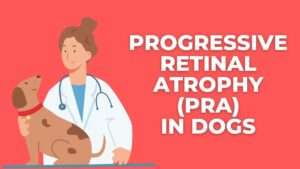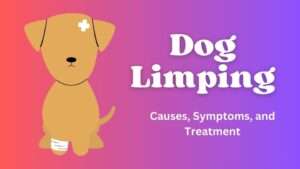Dogs, our loyal companions, often have a knack for sharing our meals. While it’s tempting to treat them with a piece of pork, as responsible pet parents, it’s crucial to understand if it’s safe for them. Can dogs eat pork? Let’s delve into this topic and unravel all you need to know to ensure the well-being of your furry friend.
Contents Overview
What is Pork?
Pork is meat obtained from pigs. It is a popular protein source consumed worldwide and is available in various cuts such as chops, ribs, and bacon. Pork is versatile and can be cooked in numerous ways, including grilling, roasting, and frying. It is rich in protein and contains essential nutrients like zinc and B vitamins. However, it’s important to cook pork thoroughly to eliminate any potential bacteria or parasites that could be harmful to humans and animals alike.
Nutritional Value of Pork
Pork is a nutrient-rich meat that provides essential components for a balanced diet. It is a significant source of high-quality protein, crucial for muscle growth, repair, and overall body function. Additionally, pork contains essential vitamins and minerals such as B vitamins (including B12, niacin, and thiamine), zinc, phosphorus, and selenium, which support various bodily processes, including metabolism and immune function. While pork can be a nutritious addition to a diet, it’s important to consume it in moderation and opt for lean cuts to minimize intake of saturated fats and calories.
Is Pork Safe for Dogs?
Dogs can safely eat pork in moderation, but there are important considerations to keep in mind. Plain, cooked pork without any seasonings or additives is generally safe for dogs to consume. However, fatty cuts like bacon should be avoided, as they can lead to pancreatitis and other health issues. Additionally, it’s crucial to ensure that the pork is thoroughly cooked to eliminate any potentially harmful bacteria or parasites. Feeding pork bones to dogs should also be avoided, as they can pose a choking hazard and may splinter, causing internal injuries. Overall, while pork can be included as an occasional treat in a dog’s diet, it’s essential to follow guidelines and monitor for any adverse reactions.
Benefits of Feeding Pork to Dogs
Incorporating pork into a dog’s diet can offer several potential benefits:
- High-Quality Protein Source: Pork provides dogs with a rich source of animal protein, which is essential for muscle development, repair, and overall health.
- Variety in Diet: Introducing pork can add variety to a dog’s diet, preventing dietary monotony and offering different flavors and textures.
- Nutrient Diversity: Pork contains a range of vitamins and minerals that contribute to a dog’s overall nutrition, supporting various bodily functions and promoting vitality.
- Palatability: Many dogs find pork to be highly palatable, making it a favorable option for picky eaters or dogs with reduced appetites.
- Digestibility: When cooked properly and served in appropriate portions, pork can be highly digestible for dogs, minimizing the risk of gastrointestinal upset.
Potential Risks of Feeding Pork to Dogs
While pork can offer potential benefits for dogs, pet owners need to be aware of the potential risks and take necessary precautions before incorporating it into their dog’s diet. In this comprehensive guide, we’ll delve into the potential hazards associated with feeding pork to dogs and outline essential precautions to ensure their safety and well-being.
- Risk of Pancreatitis
- High-Fat Content: Pork, especially fatty cuts, can contain high levels of fat, which may increase the risk of pancreatitis in dogs.
Precaution: Opt for lean cuts of pork and trim excess fat before serving to reduce the risk of pancreatitis.
- Risk of Foodborne Illness
- Bacterial Contamination: Pork can harbor harmful bacteria such as salmonella, E. coli, and listeria, posing a risk of foodborne illness in dogs.
Precaution: Thoroughly cook pork to eliminate bacteria and prevent foodborne illness. Avoid feeding raw or undercooked pork to dogs.
- Potential Allergic Reactions
- Allergenic Proteins: Dogs can develop allergic reactions to proteins found in pork, leading to symptoms such as itching, skin rashes, or digestive upset.
Precaution: Introduce pork gradually into a dog’s diet and monitor for any signs of allergic reactions. Consult a veterinarian if allergic symptoms arise.
- Risk of Obesity
- Caloric Density: Pork can be calorie-dense, contributing to excessive calorie intake and potential weight gain in dogs if not fed in moderation.
Precaution: Practice portion control and ensure pork treats or meals do not exceed 10% of the dog’s daily calorie intake to prevent obesity.
- Bone Hazard
- Splintering Bones: Cooked pork bones can splinter and pose a choking hazard or cause intestinal blockages in dogs.
Precaution: Avoid feeding cooked bones, including pork bones, to dogs. Offer safe alternatives such as commercial chew toys or raw bones specifically designed for canine consumption.
- Seasoning and Additives
- Toxic Ingredients: Pork prepared with seasonings, additives, or marinades containing ingredients like garlic, onions, or excessive salt can be toxic to dogs.
Precaution: Serve plain, unseasoned pork to dogs and avoid adding any ingredients that may be harmful to their health.
Guidelines for Feeding Pork to Dogs
In this detailed guide, we’ll delve into safe methods for feeding pork to dogs, focusing on proper preparation, cooking techniques, and serving considerations.
- Choose Lean Cuts of Pork
- Lean Cuts: Opt for lean cuts of pork, such as loin or tenderloin, to reduce the fat content and minimize the risk of pancreatitis and obesity in dogs.
- Thorough Cooking
- Cooking Temperature: Ensure pork is cooked thoroughly to an internal temperature of at least 145°F (63°C) to eliminate harmful bacteria and reduce the risk of foodborne illness.
- Avoid Raw Pork: Avoid feeding raw or undercooked pork to dogs, as it can contain bacteria like salmonella and pose a risk to their health.
- Trim Excess Fat
- Fat Trimming: Trim excess fat from pork cuts before cooking to reduce the calorie content and minimize the risk of pancreatitis and obesity in dogs.
- Plain Preparation
- Unseasoned Pork: Serve plain, unseasoned pork to dogs to avoid exposing them to potentially toxic ingredients like garlic, onions, or excessive salt.
- Portion Control
- Moderation: Serve pork in moderation as part of a balanced diet, ensuring it doesn’t exceed more than 10% of the dog’s daily calorie intake to prevent obesity and digestive issues.
- Bone Safety
- Avoid Cooked Bones: Refrain from feeding cooked pork bones to dogs, as they can splinter and pose a choking hazard or cause intestinal blockages.
- Safe Alternatives: Offer safe alternatives such as commercial chew toys or raw bones specifically designed for canine consumption to satisfy their chewing instincts.
- Monitoring for Allergic Reactions
- Gradual Introduction: Introduce pork gradually into a dog’s diet and monitor for any signs of allergic reactions such as itching, skin rashes, or digestive upset.
- Consult a Veterinarian: Consult with a veterinarian if allergic symptoms arise or if there are concerns about the dog’s tolerance to pork.
- Incorporating into Meals
- Balanced Diet: Incorporate pork as part of a balanced diet that includes a variety of protein sources, vegetables, and carbohydrates to ensure nutritional adequacy.
- Mix with Dog Food: Mix cooked, plain pork with the dog’s regular food to add variety and enhance palatability.
When to Avoid Pork for Dogs
- Pancreatitis Risk: If your dog has a history of pancreatitis or is prone to digestive issues, it’s best to avoid pork due to its high-fat content.
- Allergic Reactions: If your dog exhibits allergic reactions to pork or pork products, such as itching, skin rashes, or digestive upset, it should be avoided.
- Obesity Concerns: If your dog is overweight or prone to obesity, it’s advisable to avoid pork or limit its consumption to prevent excessive calorie intake.
- Raw or Undercooked: Avoid feeding raw or undercooked pork to dogs, as it can harbor harmful bacteria and increase the risk of foodborne illness.
- Seasoned or Processed Pork: Steer clear of seasoned or processed pork products containing ingredients like garlic, onions, or excessive salt, which can be toxic to dogs.
- Choking Hazard: Avoid feeding cooked pork bones to dogs, as they can splinter and pose a choking hazard or cause intestinal blockages.
- Health Conditions: If your dog has specific health conditions or dietary restrictions, consult with a veterinarian before introducing pork into their diet to ensure it’s safe and suitable.
Safe and Suitable Alternatives of Pork for Dogs
When considering alternatives to pork for dogs, opt for lean proteins such as chicken, turkey, or fish, which provide essential nutrients without the high-fat content. Additionally, lean beef or venison can be suitable options, provided they are served cooked and without seasonings. Vegetables like carrots, green beans, and sweet potatoes can offer fiber and vitamins, while fruits such as apples and blueberries provide antioxidants and natural sweetness. Commercial dog treats made with quality ingredients and specifically formulated for canine consumption are also safe alternatives to pork. Always ensure that any alternative foods are served in appropriate portions and consult with a veterinarian to address any specific dietary needs or concerns for your dog.
Bottom Line
In conclusion, while dogs can eat pork in moderation, it’s essential to exercise caution and adhere to certain guidelines to ensure their safety and well-being. By opting for lean, well-cooked pork and avoiding fatty cuts and bones, you can treat your furry friend to a tasty snack without compromising their health. Remember, your dog’s dietary needs may vary, so it’s always best to consult with your veterinarian before introducing new foods into their diet. With proper care and attention, you can enjoy sharing occasional pork treats with your canine companion while keeping them happy and healthy.



































+ There are no comments
Add yours